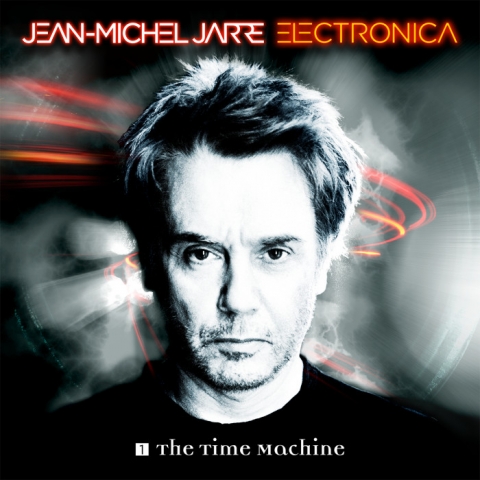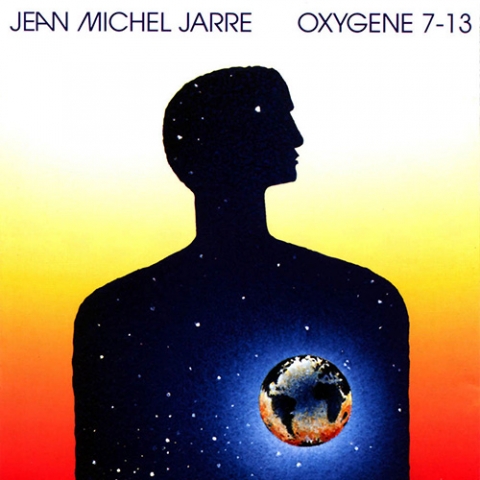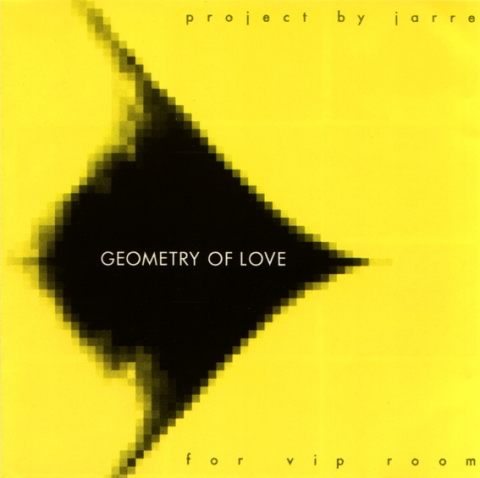- The time machine
- Glory
- Close your eyes
- Automatic Pt.1
- Automatic Pt.2
- If...!
- Immortals
- Suns have gone
- Conquistador
- Travelator Pt.2
- Zero gravity
- Rely on me
- Stardust
- Watching you
- A question of blood
- The train & the river
Releasing Oxygene 7-13 in 1997, French musician Jean Michel Jarre set a full stop to a period of his career and to a way of making music: gone were his great sucesses (Oxygene, 1976; Equinoxe, 1978), the conceptual albums and the epic instrumental suites.
The first work published after that declaration of intentions, Metamorphoses (2000), had a less than enthusiastic welcome, although the passing of time has proved it as the most bold and avant-garde album by Jarre to date. After that came two lesser known but acceptable albums (Sessions 2000, 2002 and Geometry of Love, 2003) and some interesting compilations, such as Aero (2004) or Essential & Rarities (2011). Although not reaching formerly success, he kept a certain level as a respected figure within the genre. Until the embarrassing Teo & Tea (2007).
At that time, nobody questioned Jean Michel Jarre's status as ground-breaking figure of the electronic music, nor his ability to organise huge mega-concerts in impossible places (the Giza Pyramids in 2000; the Forbidden City of Pekin in 2004; the docks of Gdansk in 2005 or the Merzouga desert in 2006). What was actually in question was his own evolution as musician, his ability to redefine himself or adapt to the new trends, for it seemed clear that he wouldn't go back to his old style.
Teo & Tea was a failed attempt to get into dance floors and the club scene: the field were the new electronic music was developing faster in the first decade of the 21st century. Ironically, many musicians who formed part of that scene do recognize Jarre as a source of inspiration, both musical and personal.
In 2010 the French auteur signed onto a 250 concerts tour during two years in 36 countries, proving that his classic albums (Magnetic Fields, 1981; Rendez-Vous, 1986; Chronologie, 1993) and the laser and light shows still had enough appeal to fill stadiums and theatres up. But nothing of what he published after 1997 really stood out, and with the passing of the years and the lack of new works, not few started to believe that the time of Jean Michel Jarre had passed for good.
And in 2015, eight years after his last studio album, he publishes this Electronica 1: The time machine, first volume of a double album of collaborations.
Considering the starting point, Electronica is impressive, and very few would have the ability to bring together the group of artists gathered. For four years, Jarre has traveled to where it was necessary to compose and record, elbow to elbow, about thirty themes (this first volume includes 16) with heavy weights of the genre, such as Tangerine Dream or Laurie Anderson, stablished stars, as M83 or Moby, or emerging artists like Gesaffelstein or Little Boots.
With also people like Pete Townshend, Air or Armin Van Buuren on board, The time machine is indeed a time travel through the last 40 years of electronic music. But what Jarre really vindicates is not that music for itself, but himself, his own figure as founding father of the electronic popular music, as pioneer to whom nearly every guest owes something. According to the musician himself in the notes of the album, "for every artist, every collaborator in this project, there is a reason why, a reason why in terms of music, in terms of sound, inspiration; [...] Mi whole life and career as musician is covered on this project through the different styles and facets of electronic music". In this sense, Electronica is a success and a milestone in Jarre's career.
A different question is the musical result. With so different artists and styles broght together, Jarre's first and greatest achievement is managing to get a cohesive work. The sound is renovated, not to the point of being innovative, but enough to approach the most accessible pop in modern electronic music. It was Jarre also generous when letting space to the collaborators. Probably too much generous, becoming blurred in too many themes: 'Glory' is a synthpop song from the less interesting M83; 'Suns have gone' sounds like a discard from Destroyed (Moby, 2011), 'Zero Gravity' is Tangerine Dream in auto-pilot, repeating schemes from 'Love on a real train' (Risky Business, 1985) and 'Stardust' is a trance theme dj Van Buuren can write in an evening: catchy, but insultingly simple.
In 'The time machine' (with Boys Noize), both parts of 'Automatic' (with Vince Clarke) or 'The train & the river' (with pianist Lang Lang) is easier to find the trail of Jarre, with his sequences and melodies in foreground, and not only because the characteristic sound of the laser harp (actually, a preset from the Elka Synthex synthesizer).
'Close your eyes', the track with French duo Air, is also a tour through the history of electronic music instruments, starting with a loop recorded on tape, following with analog and digital synths, and finishing with an iPad. Melodies are nice and Nicolas Godin and Jean-Benoit Dunckel contribute with their characteristic robotic voices and gloomy pianos. A remarkable exercise, but futile in a time when any sound can be sampled.
'If...!' is a dull pop song in which Jarre doesn't appear nor is Victoria Christina Hesketh (alias Little Boots) specially inspired; it is catchy, but totally anonymous. Trip-hop has its representation in the weird, and because of that outstanding, 'Watching you' (together with Robert Del Naja, from Massive Attack), and film's music from the 70s, when the use of synthesizers was common, in 'A question of blood', written together with director John Carpenter.
With this album, Jean Michel Jarre achieves his goal of reminding the world, just in case anyone had forgotten, that musicians making electronic music today have a strong bond, whether they are conscious about it or not, with the man who took the synthesizers out of the radio laboratories. However his music, fortunately, does not need any self-hommage, for it defends for itself.



